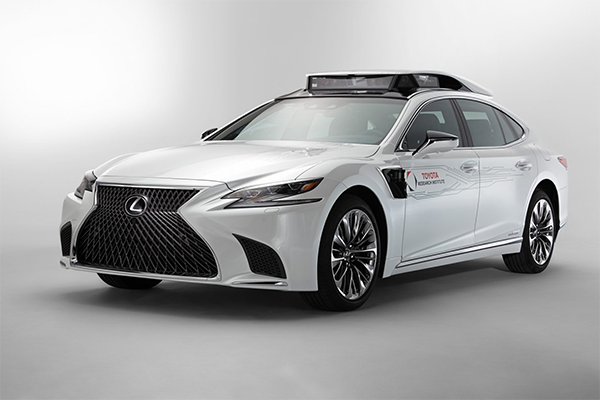
For many, imagining a time where fully autonomous vehicles are available on the consumer market still seems a lifetime away, but those in the car industry understand that self-driving cars will inevitably enter the market within the next decade, or so. Like many of our peers, our Toyota of Plano team looks forward to the impressive vehicle improvements to come. In fact, Toyota Engineering is working with the University of Michigan in an effort to make autonomous vehicles that will support and more harmoniously coexist with drivers.
The first step in creating a more cohesive environment for drivers and autonomous vehicles is to understand how drivers interact with these vehicles, and now that it’s been several years since autonomous test vehicles started appearing on the road, Toyota is using this research to improve driver interactions. Based on Toyota’s findings, drivers were not concerned with the overall safety of these autonomous test cars, instead some drivers had concerns that these vehicles were clogging up traffic.
With this information in mind, Toyota determined that they needed to shift their focus to figure out how to combat the real issue, “roadmanship”. Investing time in understanding these normal road behaviors would ensure that autonomous vehicles weren’t causing unnecessary road rage. So that's what Toyota is doing. They knew that in order to understand these social driving expectations, they needed to determine what the “normal” range of behaviors are, and what behaviors the autonomous vehicles are doing to upset these drivers. To better understand the scope of drivers' concerns, imagine a slow driver in an express lane. While this driver believes they are being cautious, they may be putting themselves and others in harm by creating a roadblock for ansty drivers.
Inorder to further establish what common road courtesy is, Toyota partnered with experts at the University of Michigan. They began their research by watching a large sample size of human-driven vehicles, in common driving situations, and these findings allowed them to find patterns that are helping to establish what “normal” driving looks like.
One of these studies took place at an intersection in Jackson Hole, Wyoming. The team took hours of footage and images and used these assets to create a birds-eye-view orientation. They then used machine learning to study how drivers behave towards oncoming traffic. With over 5,000 driving situations documented, they were able to determine length of driving gaps that were deemed acceptable and unacceptable.
One of the most interesting findings from this study was that drivers use distance as the main factor when deciding whether it's safe to take a right turn. This suggests that drivers are more likely to use distance to determine whether to drive into oncoming traffic, instead of calculating the speed of oncoming traffic or length of time needed to turn. From a separate study, researchers found that when entering roundabouts drivers are more concerned with the angle of approaching cars, rather than distance. This suggests that there is a situational element that helps to determine how a driver reacts to oncoming traffic.
These may seem like small findings, but they can make a major impact in the successful development of autonomous vehicles. Unlike machines, humans aren’t extremely calculated - the biggest task for engineers is finding a way to safely allow these vehicles to coexist with drivers, motorcyclists, bike riders, and pedestrians. The automotive industry still has plenty of work ahead of them before autonomous vehicles will be fully ready for consumer use, but the future is bright.
Our Toyota of Plano team is proud to be a flagship dealer for an automotive company focused on being at the forefront of innovation and safety. As Toyota continues to expand their investment in safety research, like these studies of human instinct, our Toyota of Plano team can only expect further improvements in our already impressive lineup of vehicles. Visit Toyota of Plano today and ask about all the impressive new features available on our large inventory of 2022 Toyota’s.
